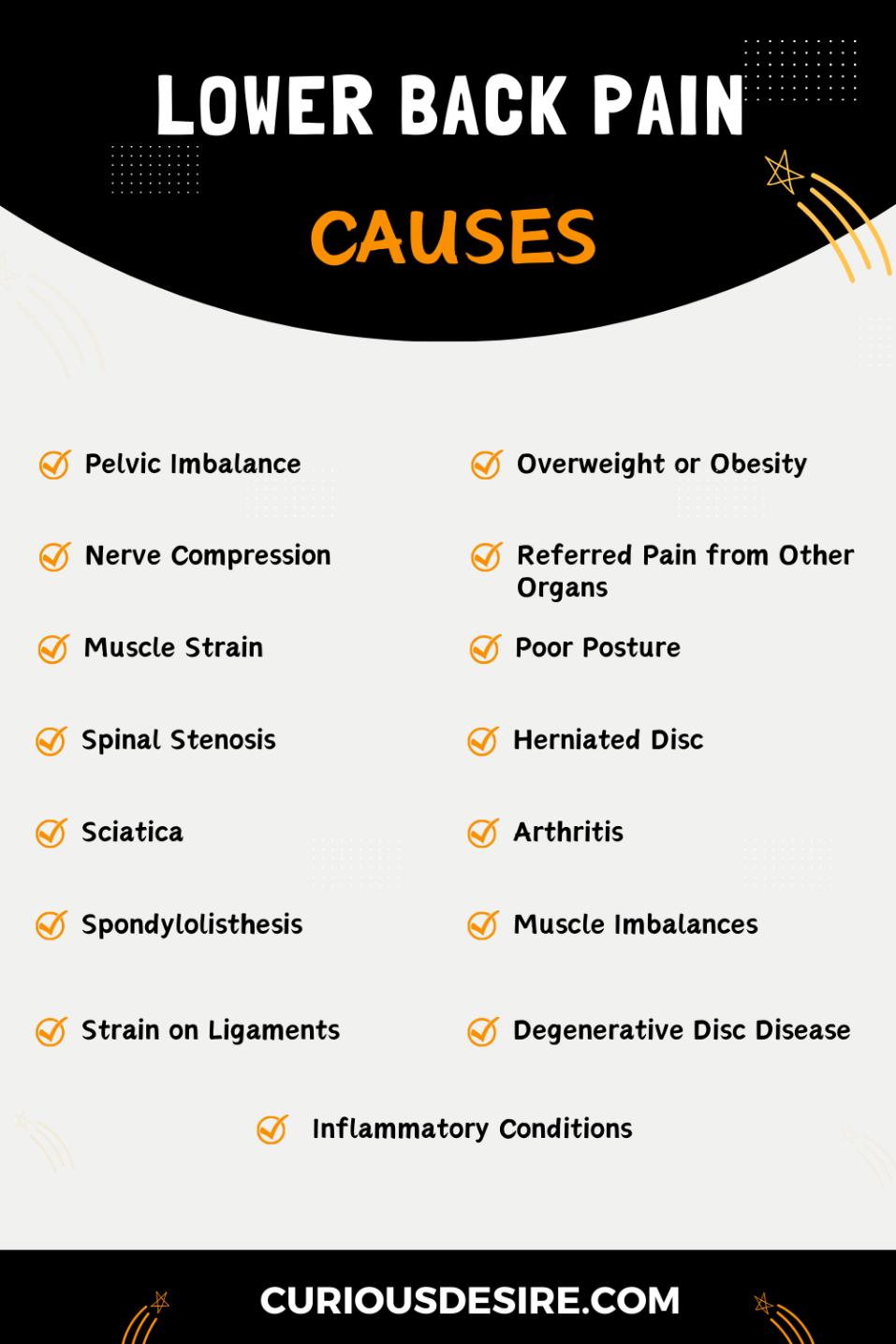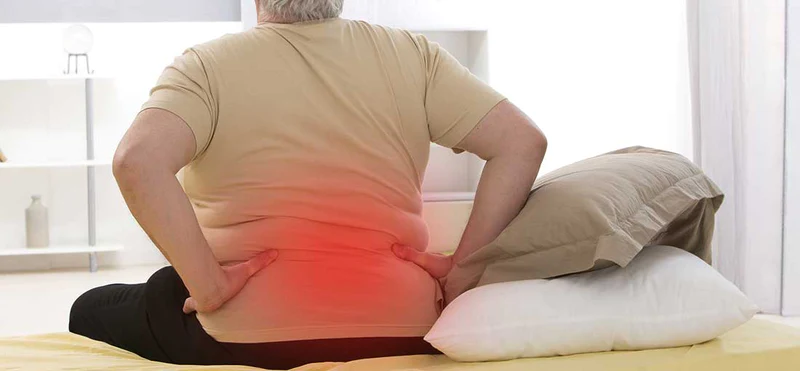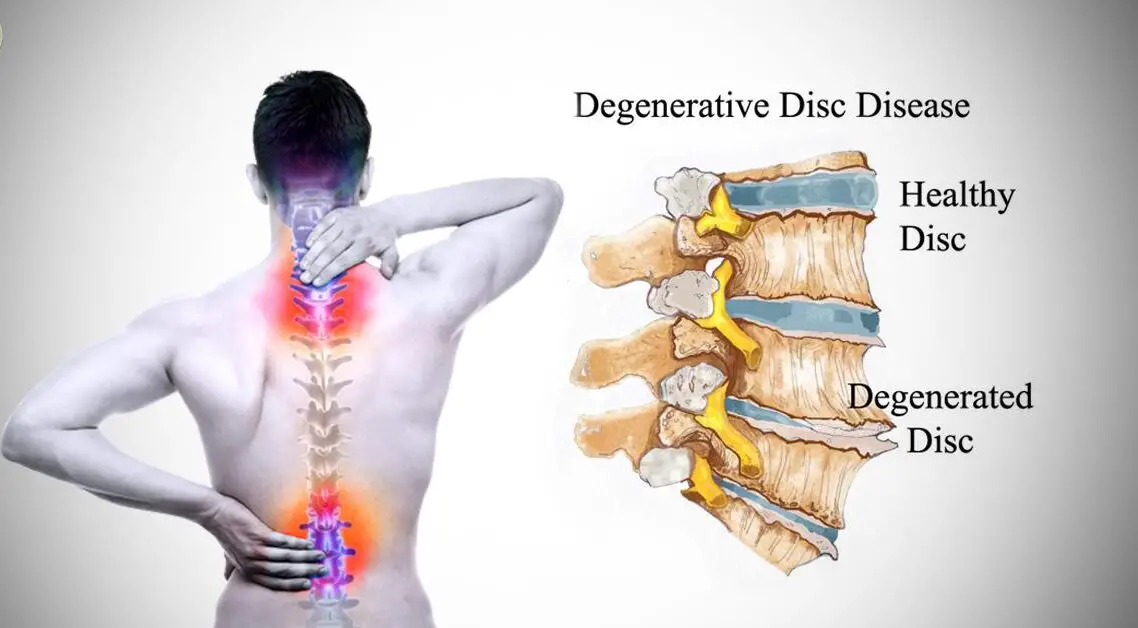Walking is usually a simple and easy thing to do, but sometimes it can be hard if your lower back hurts.
There are different reasons why your lower back might hurt when you walk. It could be because of health issues or things you do in your daily life.
In this blog post, we will talk about the different reasons why your lower back might hurt when you walk, so you can understand and find ways to feel better.
Here are the 5 most common causes of lower back pain when walking:
- Overweight or Obesity
- Muscle Strain
- Nerve Compression
- Herniated Disc
- Sciatica
[toc]

Cause 1: Pelvic Imbalance
Pelvic imbalance occurs when there’s a difference in the length of your legs or if your pelvis is tilted. Research has shown that these imbalances can affect how your spine aligns, causing strain on the lower back, especially during activities like walking.
For instance, if one leg is shorter than the other, it may lead to uneven weight distribution, putting extra stress on one side of the lower back. A tilted pelvis can also alter the natural curve of the spine, leading to discomfort.
To address pelvic imbalance, a healthcare professional may recommend corrective measures such as orthotics to balance leg length, exercises to strengthen specific muscles, or physical therapy to improve overall alignment.
Cause 2: Overweight or Obesity
Carrying excess weight, such as being overweight or obese, can contribute significantly to lower back pain during activities like walking. The additional body weight puts increased stress on the spine, joints, and muscles in the lower back.
This can lead to muscle fatigue, inflammation, and accelerated wear and tear on the structures supporting the spine.
Managing weight through a combination of healthy eating and regular physical activity is essential for reducing the strain on the lower back.
Gradual weight loss, achieved through sustainable lifestyle changes, can help alleviate lower back pain and improve overall spinal health.
Cause 3: Nerve Compression
Nerve compression occurs when there’s pressure on the nerves in the spinal column, leading to pain and discomfort.
Conditions like foraminal stenosis or a bulging disc can cause compression, resulting in lower back pain that may intensify with walking.
In some cases, medications to reduce inflammation or surgical interventions may be recommended to alleviate pressure on the affected nerves.
Identifying the specific cause of nerve compression is crucial for developing an effective treatment plan.
Cause 4: Referred Pain from Other Organs
Sometimes, pain originating from organs like the kidneys or digestive system can be felt in the lower back. Conditions such as kidney stones or gastrointestinal issues can cause discomfort that is referred to the back, especially during activities like walking.
It’s essential to consider the possibility of referred pain from internal organs when evaluating lower back pain.
Addressing the underlying organ-related issues, such as treating kidney stones or managing gastrointestinal conditions, can help alleviate the referred pain in the lower back.
Cause 5: Muscle Strain
Muscle strain in the lower back happens when the muscles are worked too much or not used correctly. This often occurs when you walk long distances or walk on uneven surfaces.
The muscles get tired, and small tears can happen, causing pain. To prevent this, it’s important to warm up before activities, keep good posture, and not push your muscles too hard.
Rest and gentle stretches and exercises can help muscles recover from strain.
Cause 6: Poor Posture
Having bad posture when you walk can put extra stress on your lower back. This can occur when you slouch or hunch forward while walking. When your spine is not in its natural position, it can lead to discomfort.
To improve posture, try to stand and walk with your shoulders back and your head held high.
Doing exercises to strengthen your core muscles can also support better posture and reduce the risk of lower back pain.
Cause 7: Spinal Stenosis
Spinal stenosis means the space inside your spine gets narrower, putting pressure on the spinal cord and nerves.
This can make walking or standing more painful. Symptoms may include pain, numbness, or weakness in the lower back and legs.
Treatment options can include medicine and exercises to manage symptoms, and in some cases, surgery may be needed to make more space in the spine.


